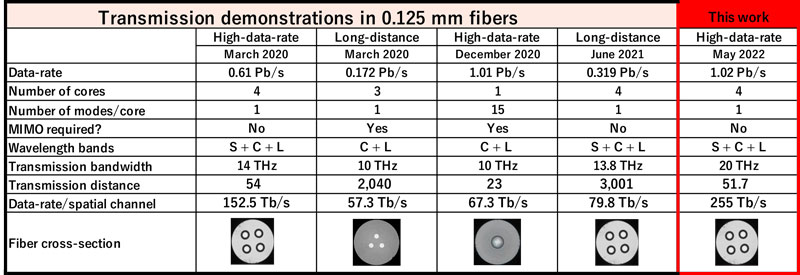A group of researchers at Japan’s National Institute of Information and Communications Technology (NICT) has reported the world’s first demonstration of more than 1 petabit per second in a custom multi-core fiber (MCF) optic cable.
NICT researchers constructed the transmission system using 4-core MCF with standard 0.125 mm cladding diameter, wavelength division multiplexing (WDM) technology, and mixed optical amplification systems. The transmission system supports a record optical bandwidth exceeding 20 THz by exploiting WDM technology. This bandwidth is made of 801 wavelength channels spread across the three bands – the commercially adopted C and L-bands as well as the experimental S-band.
The system allowed transmission of 1.02 petabit per second over a distance of 51.7 km. That’s the equivalent of sending 127,500 GB of data every second, which, according to the researchers, is also enough capacity for over 10 million channels of 8K broadcasting per second.

NICT has achieved various world records by constructing various transmission systems using new optical fibers. In December 2020, the team succeeded in the first 1 petabit per second transmission demonstration in a standard diameter fiber using a 15-mode optical fiber. As impressive as the feat was, such fibers require complex signal processing to unscramble the signals which are mixed during transmission, and practical deployment is expected to require large-scale development of dedicated integrated circuits.
The new breakthrough system transmits the data faster and in one mode per core. Such fibers are compatible with current cabling technologies and do not require the complex signal processing needed for unscrambling signals in multi-mode fibers, meaning conventional transceiver hardware may be used. This demonstration shows their information-carrying potential and is a significant step toward the realization of backbone communication systems that supports the evolution of Beyond 5G information services.
The results of this experiment were accepted as a postdeadline paper presentation at the International Conference on Laser and Electro-Optics (CLEO) 2022 in May.
